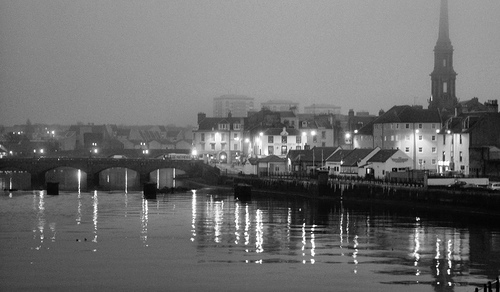Ayr
This pretty Scottish seaside town has everything that you could need. Not only does it have all of the attraction of a traditional seaside location it also has over 900 years of history behind it. The street plan here has changed very little since it was first laid down in the 13th century. The architecture of the town is such that you can see how the town developed over the centuries as there are many incredible buildings to be found here. Ayr is a town that has always had a lot going for it, the river was first bridged over 800 years ago and the towns harbour has been one of, if not the, most important such facility on Scotland’s West coast for many a century. The current racecourse has been in existence since 1770 and itself was constructed on the site of an earlier course. Add to the mix all of the amenities you will find at the seaside and it is no wonder that Ayr has been so popular.

Town History
The name of the town has been shortened over the centuries. It was originally known as St John’s Town of Ayr, and also Inverayr. It was originally built as a supporting settlement for the castle that was built here by William I in 1197, in what was originally an area of the Scottish Borders. The High Street of the town runs parallel to the river and the most noticeable landmark of the town, the Town Hall which was constructed in 1832 sits at the junction of the High Street with the city’s other main street Sandgate, highlighting the original ‘L’ shaped layout of the town.
Before the building of the bridge the river had been previously crossed by means of a ford. The stone bridge that replaced it in 1470, known locally as Auld brig is still very much in use today and has become one of the most identifiable features of the town. The river and the harbour made Ayr an important town, and it was very much the most important port on the West Coast until it was superseded by Glasgow.
Ayr Today
Today no trace can be seen of the castle that once stood here as it was demolished at the orders of Oliver Cromwell in 1654, on the site of which he ordered the building of a large citadel which was used to govern the majority of the country of Scotland, only the outer walls of this site remain visible today. One of the remarkable features of the town is the fully restored merchant’s house located in Sandgate which dates back to 1513, making it the oldest in Scotland. Today the coastline and harbour are nowhere as busy as they have been in centuries past, but they still make a great place to spend some time. The sands are broad and often empty which means that you can walk with ease along the beach and enjoy the time that you spend here taking in the wonderful sea air.


